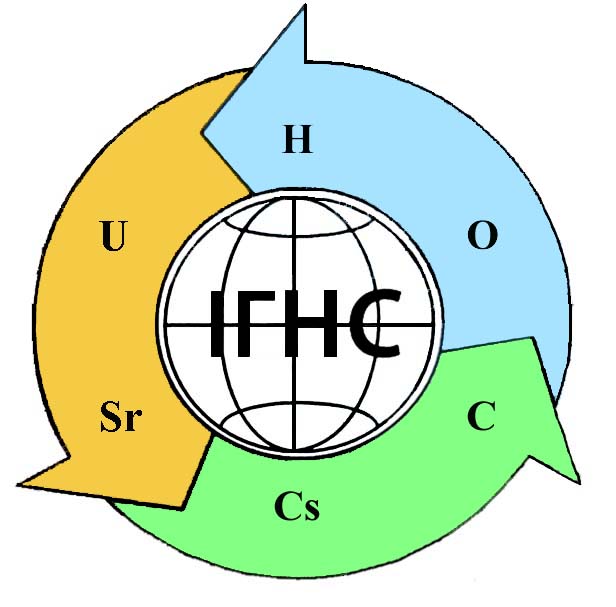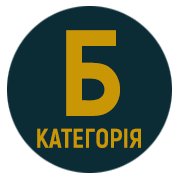GEODYNAMICS OF URANIUM ORE FIELDS IN THE WESTERN PART OF THE INHUL MEGABLOK OF THE UKRAINIAN SHIELD
DOI:
https://doi.org/10.15407/geotech2021.34.071Keywords:
granitoids, gneisses, dome, massif, pluton, geodynamics, sodium-uranium formation, radon, nitrate pollution, paleovalley, ascending movements, fault-block tectonics, uranium ore field, lithosphere, hydrosphere.Abstract
The Ingul megablock of the Ukrainian Shield contains a number of endogenous deposits of the sodium-uranium formation, which have been developed for more than 55-60 years. With the exception of the Kirovograd uranium ore region, the deposits of which are controlled by discontinuities in the fault zone of the same name, the Vatutinske and Novokostiantynivske ore fields occupy positions within the Novoukrainsky granite-gneiss dome and in close proximity to the later geostructural formation, the Korsun-Novomyrgorod pluton. Paying attention to the high degree of saturation of the Ingul megablock with endogenous uranium deposits, it is emphasized that they also contain an increased content of thorium minerals and, in combination with uranium, they produce ascending gas flows of radon. Therefore, studies of the dynamics of the upper horizons of the lithosphere and the closely related dynamics of the hydrosphere (underground and surface), as well as the gas sphere, are especially relevant both in the regions of uranium ore fields and in areas adjacent to mining enterprises. Beyond the direct influence on the radioecological situation of uranium mining enterprises, special attention should be paid to the study of the dynamics of the lithospheric surface, including fault-block structures and the kinematics of ruptures, affecting the spread of groundwater and, as a result, surface waters contaminated with uranium in the environment. In the areas of uranium ore fields, the kinematic characteristics of disjunctivals contribute to a more correct forecast of radon accumulation in natural weakly insulated underground decompressed structures and the accumulation of more long-lived products of its decay Po, Bi, and Pb with long periods of removal of biological objects from organisms. It is emphasized that in the mine workings of mining enterprises, the technological process is accompanied by nitrate pollution of groundwater due to the use of nitrate-based explosives. Thus, for the predictive assessment of radiation and nitrate pollution of the environment of industrial sites of mining enterprises and adjacent territories, the technological process of which also affects the dynamics of the litho-hydro- and gas sphere, the structural-geological, paleogeomorphological, lithological, hydrogeological, hydrographic and topographic features of the Vatutinske and Novokostiantynivske uranium ore fields. The directions of the advancement of the groundwater fronts from directly uranium mines to the nearest drains have been established. The levels of uranium pollution of surface and underground (well) waters within the Novokostiantynivske uranium ore field, as the most promising for increasing uranium mining in the coming decades, have been determined. The proposed areas and terms of complex radioecological monitoring of the Novokostiantynivske uranium ore field in order to take preventive measures to prevent the withdrawal of existing local recreational areas and water areas into the category of ecologically hazardous. On the example of the Novokostiantynivske uranium deposit, as one of the richest endogenous deposits in Ukraine, through the production shafts, which is planned to rise to the surface of uranium ore from the same type of deposits of the uranium ore field of the same name (Lisne, Litniy and Dokuchaivske) by transporting it by main drifts, the proposed optimal complex of geodynamic studies in the system of radio and general ecological monitoring of the state of the environment of such territories.
References
Генетические типы и закономерности размещения урановых месторождений Украины / Отв. ред. Белевцев Я.Н., Коваль В.Б. – Киев: Наук. Думка, 1995. – 396 с.
Жукова А.М. Сравнительная характеристика ураноносности щитов // Геологический журнал. – 1981. – Том 41. – № 1. – С. 66-73.
Эндогенное оруденение древних щитов / Отв. ред. Казанский В.И. – Москва: Наука, 1978. – 199 с.
Карта современных вертикальных движений земной коры Восточной Европы масштаба 1:2500000 / Под ред. Ю.А. Мещерякова. – Москва: ГУГК, 1973.
Нагірний В.М. Палеогеографічні умови утворення кайнозойських буровугільних покладів України. – Київ: Наук. Думка, 1977. – 107 с. 6. Марков К.К., Величко А.А., Лазуков Г.Н., Николаев В.А. Плейстоцен. – М.: Высшая школа, 1968. – 304 с.
Семенюк М.П. Криничуватсько-Краснопільська морфоструктура – новий структурний елемент Кіровоградського блока // Доповіді АН УССР, 1984. – Сер. Б (№ 12). – С. 24-27.
Семенюк Н.П. Разломно-блоковая структура зоны сочленения Кировоградско-Новоукраинского гранитоидного массива и Корсунь-Новомиргородского плутона за данными морфоструктурного анализа // Доклады АН УССР, 1980. – Сер. Б, № 10. – С. 27-29.
Комов И.Л. Радиационная минералогия и геохимия. – Киев: Наук. Думка, 2006. – 426 с.









